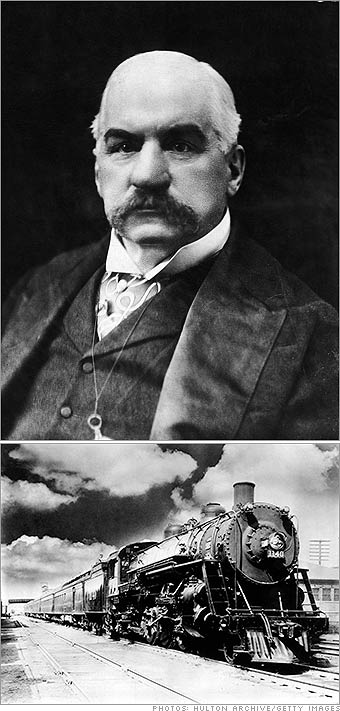The boom ended with a bust in 1894, when about one quarter of all railroads were bankrupt. But the rails didn't get torn up. Instead, with freight prices falling drastically, the railroad emerged as a powerful commercial infrastructure for new businesses. Mail-order retailers like Montgomery Ward and Sears, consumer products companies like Procter & Gamble and Coca-Cola, rapidly built highly efficient national enterprises and brands on the railroad.

Banker
J.P. Morgan financed the rapid build-out of railroad networks in the
late 19th century - then picked up the pieces after the 1894 bust.
'스피릿 > 서재에 쌓인 이야기' 카테고리의 다른 글
| The bubbles that built America-internet 인터넷 거품 (0) | 2007.05.16 |
|---|---|
| The bubbles that built America-Stock Market 주식시장의 거품 (0) | 2007.05.16 |
| The bubbles that built America - The telegraph 전화 전신 거품 (0) | 2007.05.16 |
| 인류 역사 바꿔 놓은 6대 버블 - 경제는 복잡계 (0) | 2007.05.16 |
| 경영에 접목할 만한 심리학 상식 - 네이버의 한 블로그에서 (0) | 2007.04.17 |